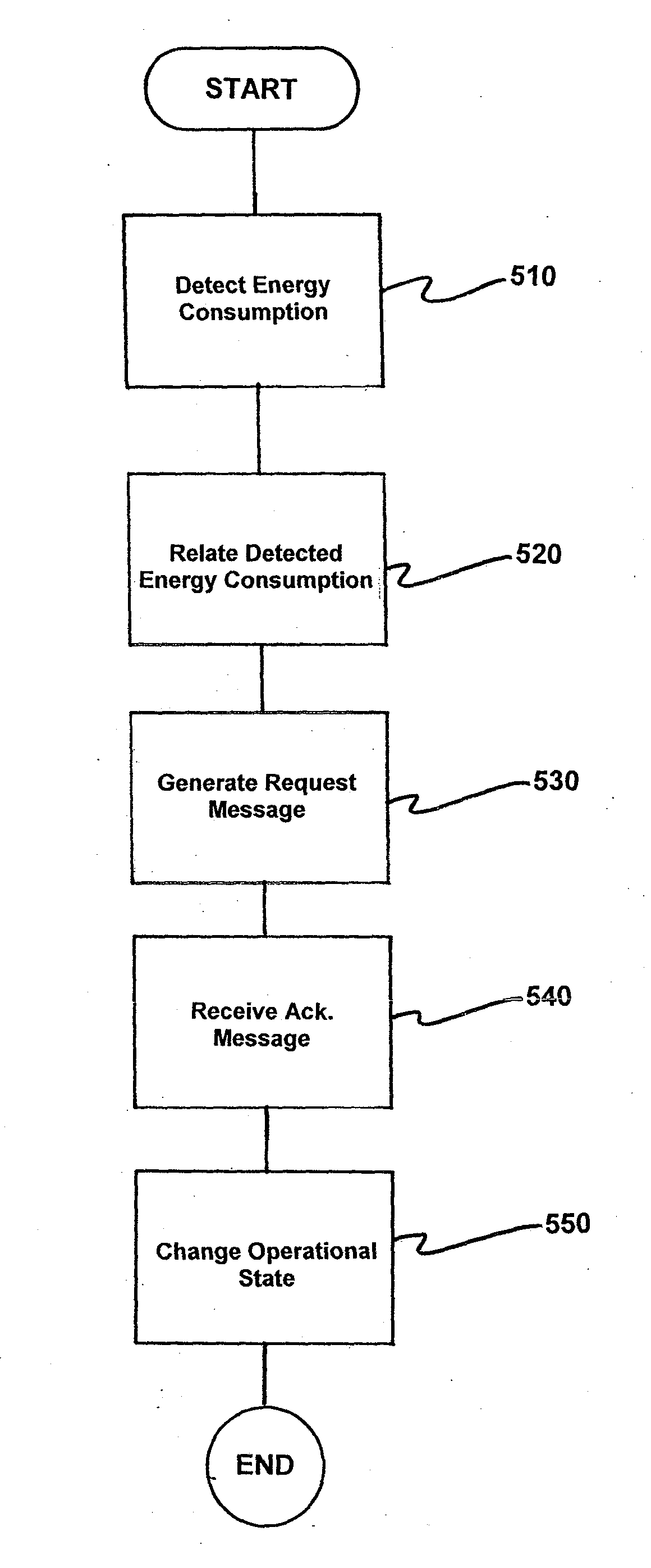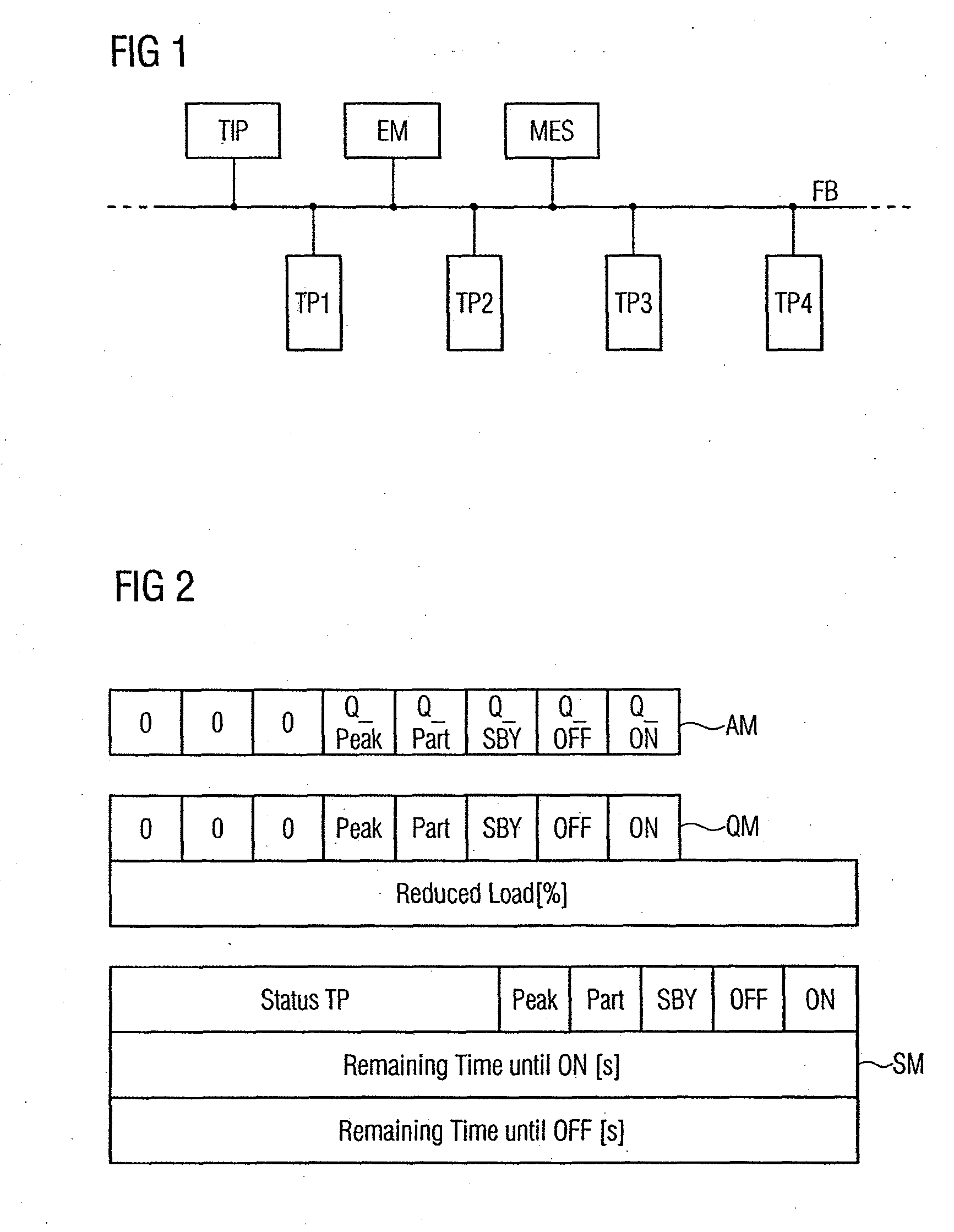Control Component and Method for an Energy Management Unit in an Industrial Automation Arrangement
a technology of energy management unit and control component, applied in the field of control systems, can solve the problems of high degree of complexity of control task, unsatisfactory control effect, and high energy consumption of individual automation components, and achieve the effect of simplifying energy managemen
- Summary
- Abstract
- Description
- Claims
- Application Information
AI Technical Summary
Benefits of technology
Problems solved by technology
Method used
Image
Examples
Embodiment Construction
[0028]FIG. 1 shows a schematic block diagram of an industrial automation arrangement, such as a production system, in which automation components (TP1, . . . , TP4) (subprocesses) are arranged via a data network field bus system (FB), the automation components (TP1, . . . , TP4) each representing a subprocess to be controlled. Consequently, a respective subprocess is controlled by a respective automation component (TP1, . . . , TP4). In addition, the energy supply (Totally Integrated Power (TIP)), an energy management device (EM) with a control component and a planning entity (Manufacturing Execution System (MES)) are integrated in the automation arrangement using the data network (FB) and using an infrastructure (for example, energy supply lines) which is not illustrated for purposes of clarity.
[0029]The control component is configured for message-based interchange of control and state data relating to the settings of an energy-saving profile integrated in each of the automation co...
PUM
 Login to View More
Login to View More Abstract
Description
Claims
Application Information
 Login to View More
Login to View More - R&D
- Intellectual Property
- Life Sciences
- Materials
- Tech Scout
- Unparalleled Data Quality
- Higher Quality Content
- 60% Fewer Hallucinations
Browse by: Latest US Patents, China's latest patents, Technical Efficacy Thesaurus, Application Domain, Technology Topic, Popular Technical Reports.
© 2025 PatSnap. All rights reserved.Legal|Privacy policy|Modern Slavery Act Transparency Statement|Sitemap|About US| Contact US: help@patsnap.com



